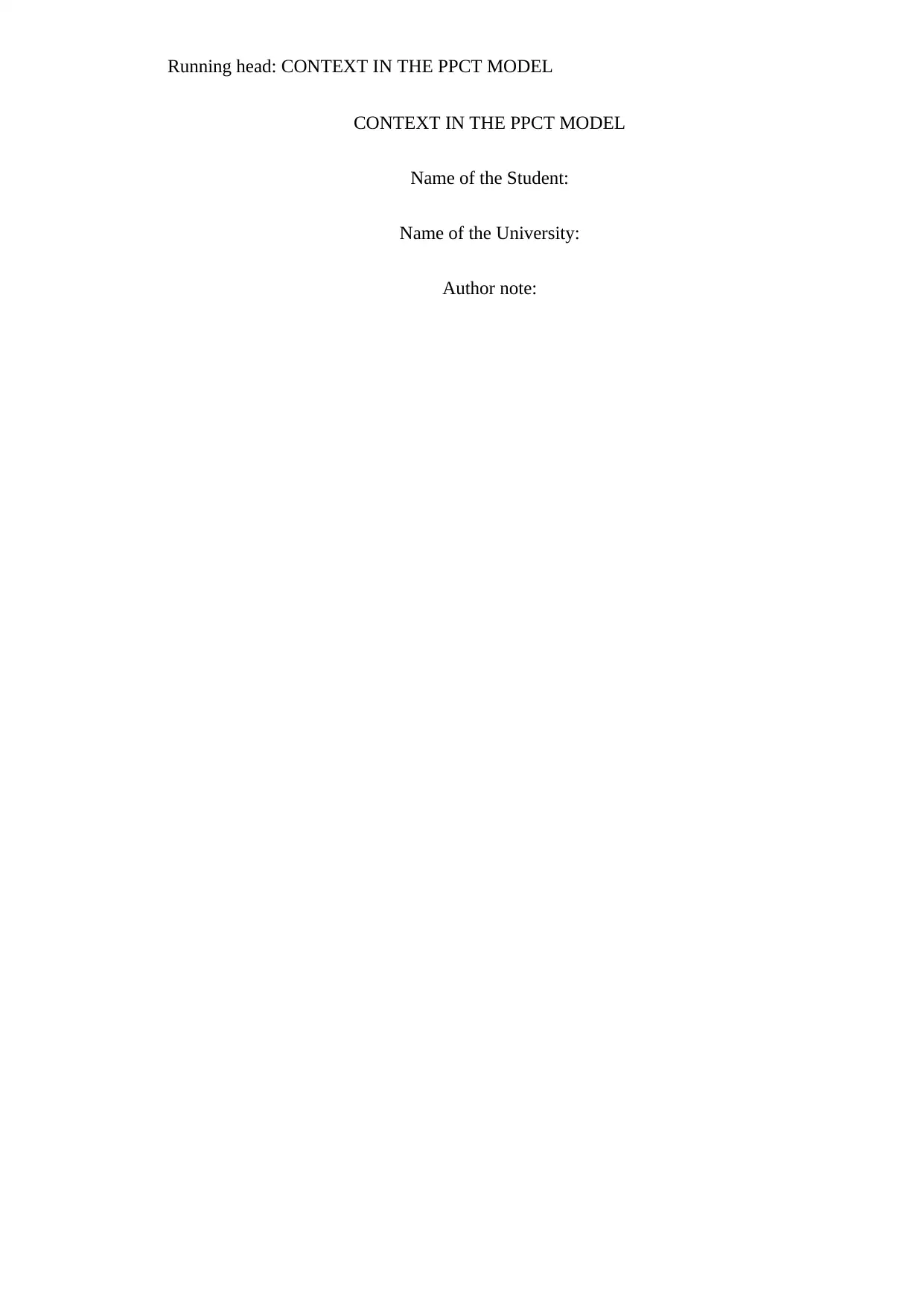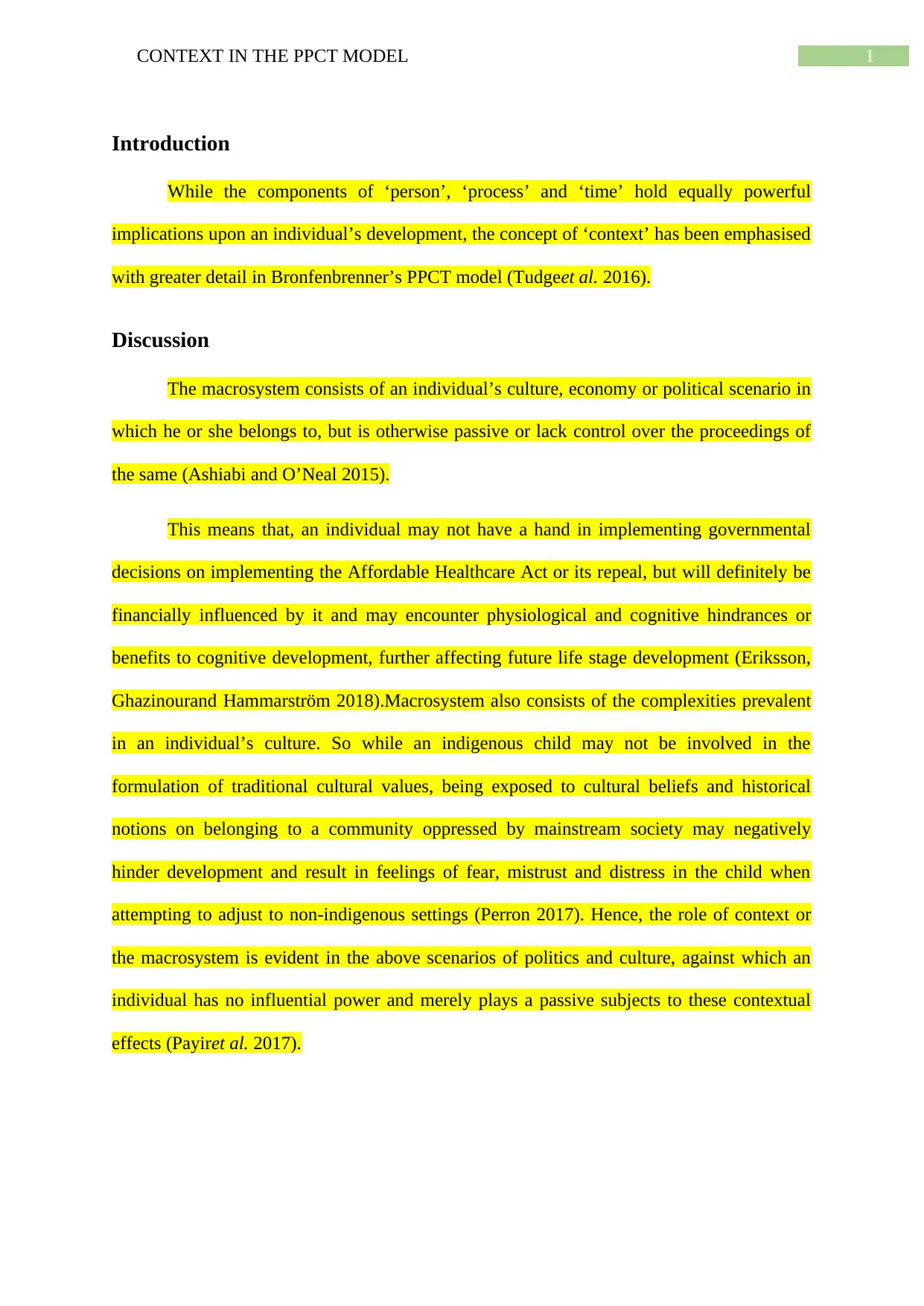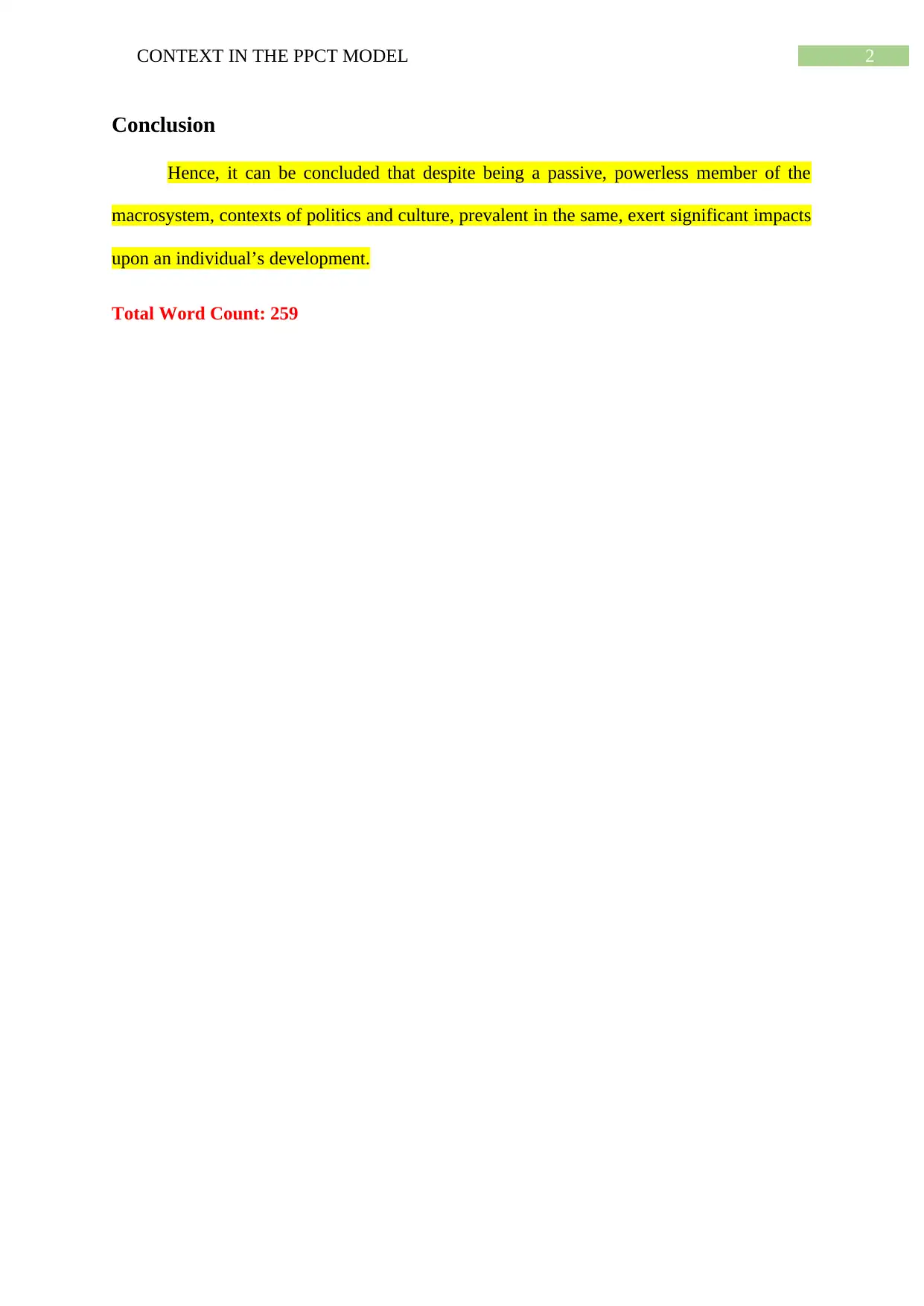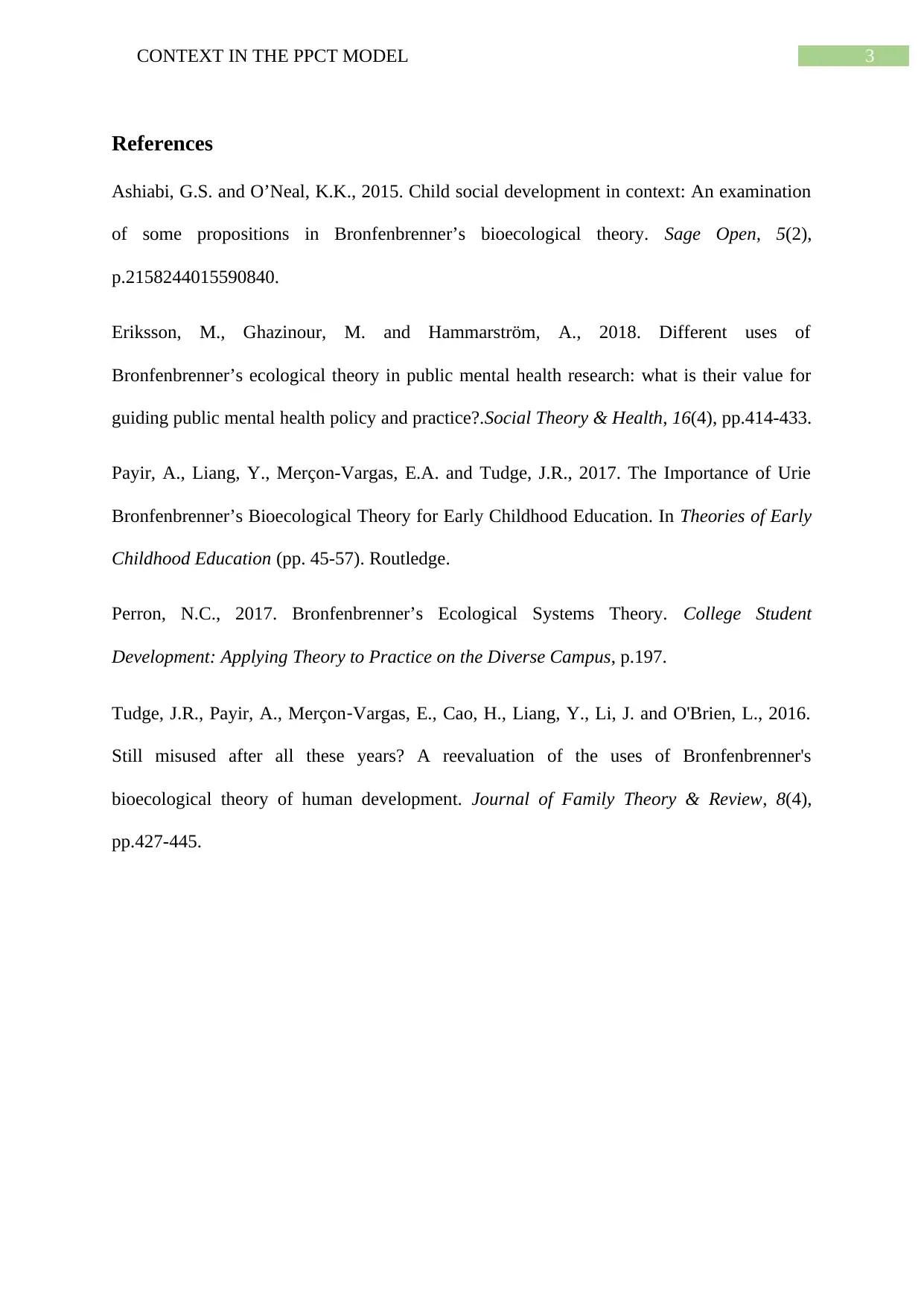The Impact of Context in Bronfenbrenner's PPCT Model: An Analysis
VerifiedAdded on 2023/03/20
|4
|601
|48
Essay
AI Summary
This essay explores the significant role of 'context' within Bronfenbrenner's PPCT model of human development, emphasizing the influence of the macrosystem, which includes an individual's culture, economy, and political environment. It highlights how individuals are often passive subjects to these contextual effects, such as governmental policies and cultural norms, which can significantly impact their physiological, cognitive, and emotional development. The essay concludes that despite lacking direct control over the macrosystem, these contexts exert a powerful influence on an individual's overall development, shaping their experiences and outcomes.
1 out of 4






![[object Object]](/_next/static/media/star-bottom.7253800d.svg)